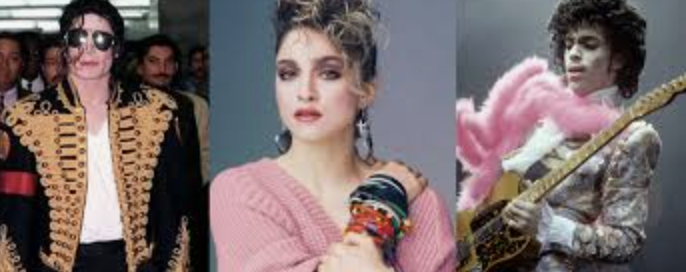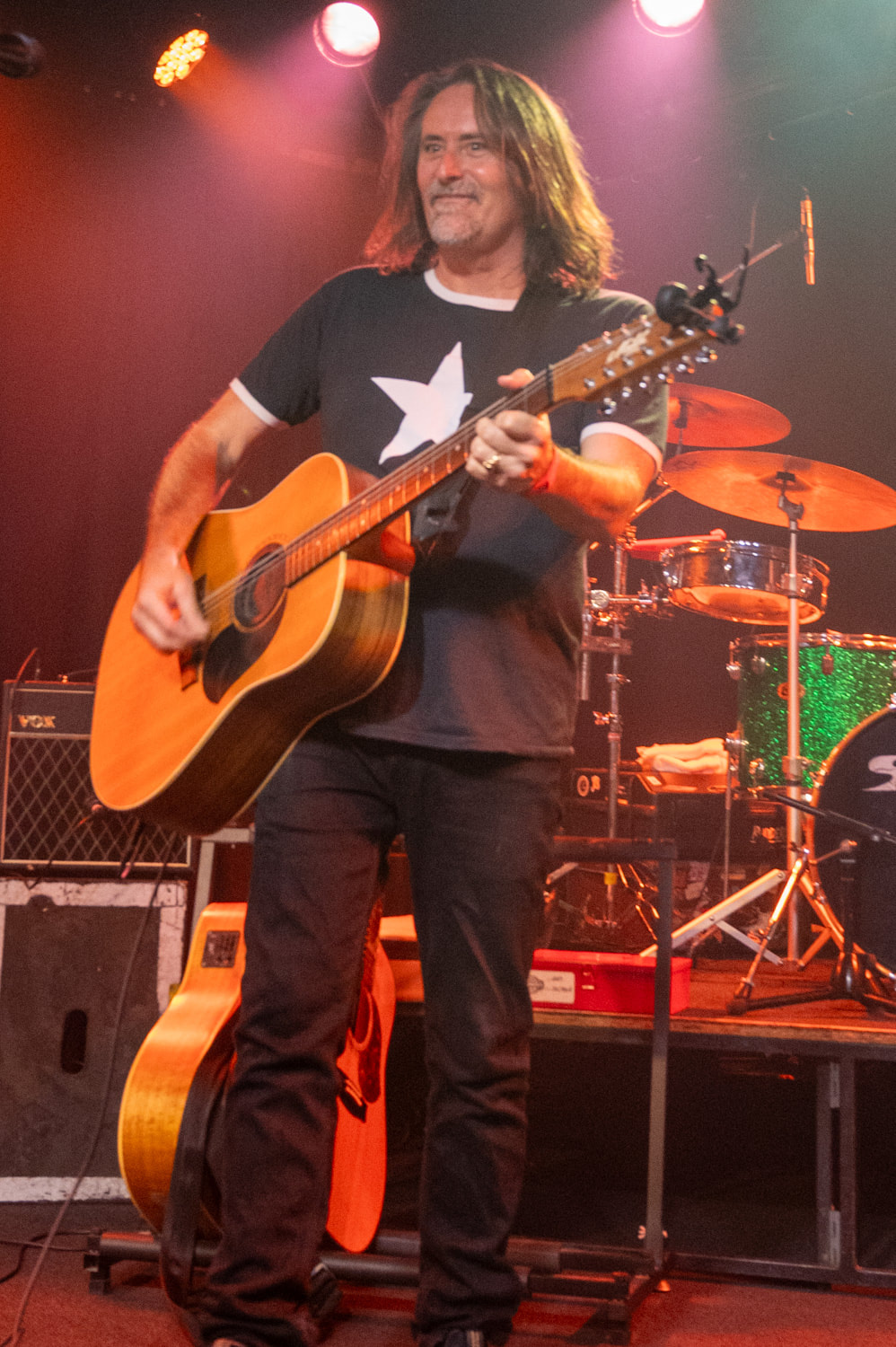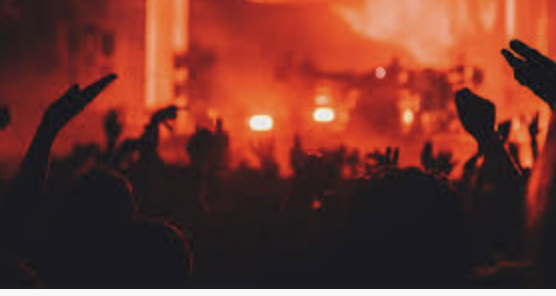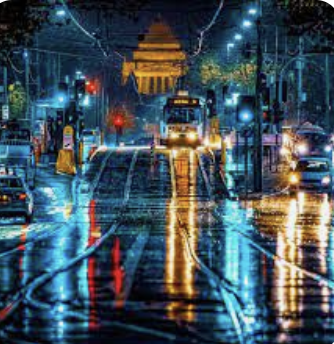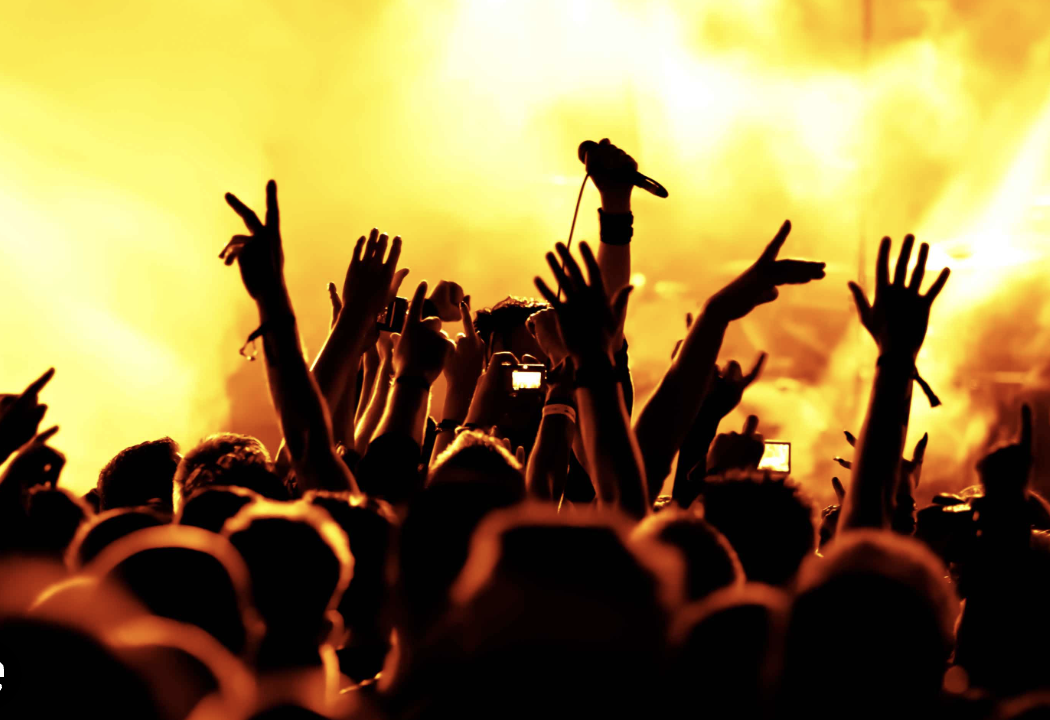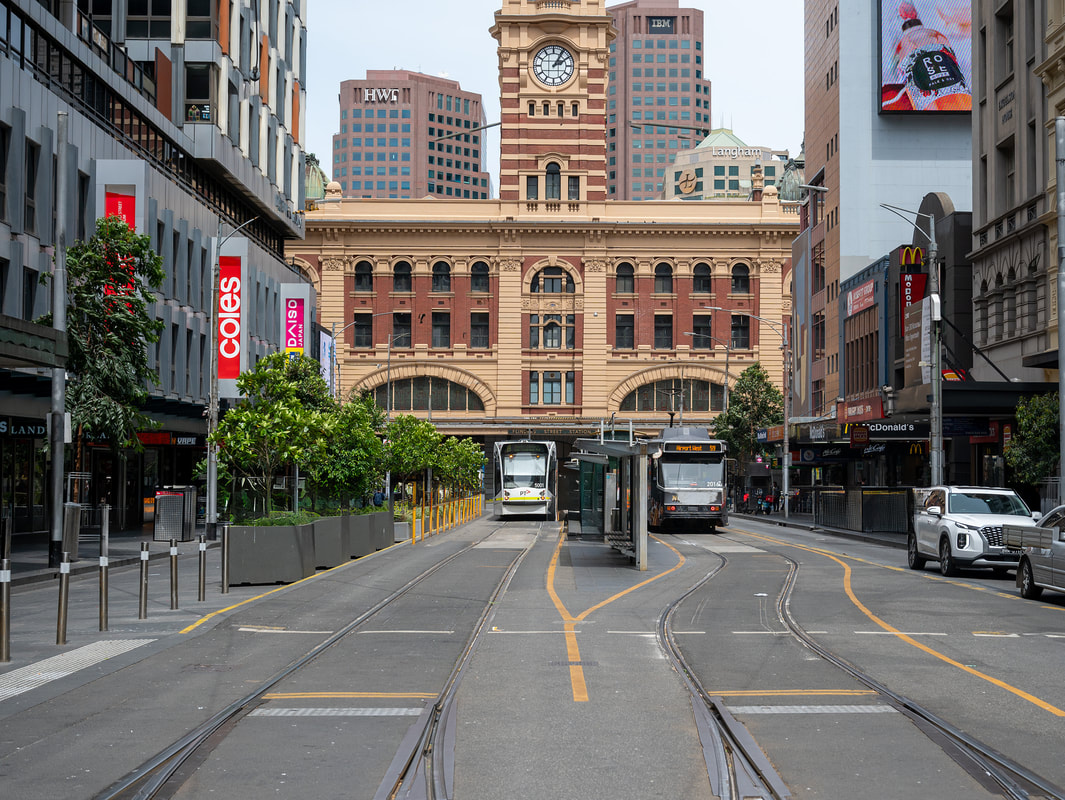 Fashion and music have always shared an intimate connection, each amplifying the other to create a complete sensory experience. In live music photography, capturing this interplay is crucial, as a musician’s style often reflects their sound, persona, and performance energy. This visual symbiosis is one of the elements that make shooting live gigs so dynamic and rewarding. The Role of Fashion in Music: Fashion isn’t just about looking good—it’s an extension of the artist’s identity and message. From the leather jackets and spikes of punk rock to the sequins and flamboyance of glam metal, musicians’ attire helps to define their image and communicate their artistic vision. Their style often mirrors their music, creating a cohesive aesthetic that draws fans deeper into their world. For example, a punk band might wear ripped jeans, graphic tees, and combat boots, echoing the raw, rebellious nature of their sound. In contrast, a pop artist might favour sleek, vibrant outfits that exude energy and charisma, complementing their upbeat tracks. As a photographer, my job is to capture these elements in a way that highlights not just the clothing but how it interacts with the performance and music. Capturing Fashion in Photography: When I shoot a gig, I pay close attention to the musicians’ outfits, using them as a guide to frame my shots. The way a jacket sparkles under the stage lights or how a fringe sways as a guitarist jumps can add a layer of movement and texture to the photo. These details help tell the story of the performance, showing not just what happened but how it felt. Lighting also plays a huge role in showcasing fashion. Spotlights, strobes, and coloured gels can transform an ordinary outfit into a visual spectacle. Knowing how to use lighting to highlight an artist's style is part of the challenge and thrill of live music photography. A well-timed spotlight can illuminate a singer’s sequined dress, making it shimmer in a way that captures the audience’s attention even in a still image. The Influence of Music Genres on Style: Different music genres often dictate distinct fashion styles, and as a photographer, I adapt to these nuances. For instance: • Rock and Metal: Leather jackets, studs, and dark tones dominate. I look for angles that highlight the ruggedness and intensity of these styles. • Pop and Dance: Bright colours and bold patterns demand vibrant and energetic shots. • Indie and Folk: Natural tones and textures often take centre stage, calling for a softer, more intimate photographic approach. • Glam and Retro: Flashy outfits and dramatic makeup require attention to detail to capture the nostalgia and flair of the performance. The Symbiotic Dance of Fashion and Music: Ultimately, fashion and music are two sides of the same coin, each influencing and enhancing the other. The way a musician dresses informs their performance, and the energy of their music brings life to their attire. As a live music photographer, capturing this connection is one of my greatest joys. Whether it’s the swish of a guitarist’s fringe jacket mid-solo or the way a singer’s glittering outfit catches the light during a crescendo, these moments add depth and personality to my work. By celebrating the interplay of fashion and music, I aim to create images that resonate with the spirit of the performance and the style of the artist, giving viewers a window into their world.
0 Comments
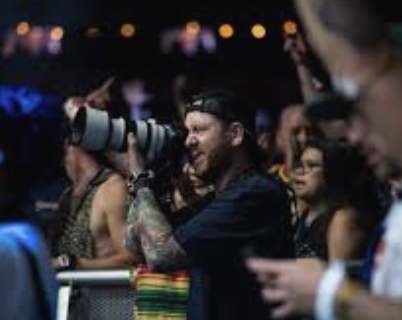 Live music photography is exhilarating, rewarding, and, at times, chaotic. Each gig brings its own set of challenges, surprises, and unforgettable moments, making every experience unique. Here are some personal stories from the pit that highlight the ups and downs of capturing the energy of live performances. The Chaos of the Pit: Being in the pit during a show is a mix of high adrenaline and meticulous focus. There’s no room for hesitation—you’re surrounded by screaming fans, booming speakers, and the unpredictable movements of performers. One memorable moment came when I had to swap out my camera battery mid-show. As I scrambled to get the new battery in, a band member noticed my predicament, laughed, and gave me a thumbs-up while still playing. That interaction, although brief, lightened the pressure and reminded me that even in chaos, there’s room for humour. Capturing the Perfect Shot: One of the most rewarding aspects of live music photography is catching the perfect shot. It’s a fleeting moment—a singer lit just right by a spotlight or a guitarist mid-jump. During a Sisters Doll gig, I captured a moment where the light hit the singer perfectly as he reached out to the crowd. I knew instantly that it was going to be one of my standout shots. These moments don’t come often, and when they do, it’s a mix of skill, timing, and a bit of luck. Navigating the Unexpected: Live shows are unpredictable by nature, and being prepared for the unexpected is key. During one festival, I had to navigate a crowd so tightly packed that moving an inch felt impossible. Yet, I managed to find a spot where the angle was just right to capture a drummer in full flow. Another time, a lead singer unexpectedly jumped off the stage and into the crowd. Reacting quickly, I followed with my camera, capturing candid moments of fans interacting with their idol. The Rewards of Connection: Interacting with artists and fans is another highlight. There have been times when artists have seen my shots post-show and expressed their gratitude, sharing them on their platforms and tagging my work. These moments of acknowledgment are deeply fulfilling—they validate the effort and passion that go into every photo. The Challenges Behind the Scenes: The work doesn’t end when the show does. Backing up files, editing photos, and preparing for the next gig are all part of the job. It’s a constant cycle of preparation and reflection. Ensuring my gear is in top condition, clearing SD cards, and double-checking my checklist have become second nature, but the occasional oversight, like forgetting an extra battery, has taught me valuable lessons. Why I Love It: Despite the challenges, live music photography remains one of my greatest passions. There’s nothing like standing inches away from a performer, feeling the vibrations of the music, and knowing that you’re capturing a moment that will live on long after the final chord fades. Each gig is a new adventure, a new story to tell, and I wouldn’t trade it for anything.  Live music photography plays a vital role at music festivals, both as a medium for storytelling and as a tool for documenting the evolution of the music scene. Over the years, it has grown to become an integral part of festivals, contributing to their culture, promotion, and legacy. Here's an overview of the role it plays: 1. Capturing the Atmosphere: Live music photography helps to encapsulate the essence of a festival—its energy, diversity, and spirit. Photographers capture the moments that make each festival unique, from euphoric crowd reactions to the artistry of the performances, allowing those who attended to relive the experience and those who missed out to feel as if they were there. 2. Creating Iconic Imagery: Some of the most iconic images in music history were taken at festivals. Think of Jimi Hendrix at Woodstock or Kurt Cobain at Reading Festival. These photos transcend time, becoming symbols of an era or movement. Today’s festivals continue to produce similar moments, ensuring that the cultural impact of live music is visually documented for future generations. 3. Driving Promotion and Marketing; Photos from festivals are essential for marketing and promotion. High-quality images are used by organizers, sponsors, and artists to advertise future events, merchandise, or albums. The immediacy of social media has amplified the role of live photography, with images being shared in real time to engage audiences and build excitement. 4. Showcasing Artist and Fan Connections: Live music photography highlights the emotional connection between performers and their audiences. From close-ups of artists pouring their hearts out on stage to wide shots of thousands of fans united in song, these images illustrate the profound impact music has on people. 5. Documenting Festival Growth and Evolution: Festivals have changed dramatically over the decades, evolving in scale, genre diversity, and technological sophistication. Photography serves as a historical record, showing how stages, lighting, and even fashion trends have shifted over the years, as well as how festivals have adapted to social and cultural changes. 6. Fostering Emerging Talent: For many photographers, festivals are a platform to showcase their skills and build portfolios. Emerging photographers gain exposure, while established professionals create work that often becomes part of their legacy. This mutual relationship supports the growth of both the photography and music industries. 7. Preserving Cultural Legacy Music festivals often define cultural moments and movements, and live photography ensures these moments are not forgotten. The documentation of festivals like Glastonbury, Coachella, or Knotfest over the years preserves the story of live music as a cultural phenomenon. Conclusion: Live music photography is more than just an art form—it’s a bridge between the artists, the fans, and the broader cultural context. It celebrates the magic of live performances, amplifies their reach, and cements their place in history. At music festivals, it plays an indispensable role in shaping how these events are remembered and cherished.  Every gig tells its own story, but some performances leave an indelible mark on your memory. These are the moments that remind me why I picked up a camera in the first place—the connection between the music, the performers, and the audience that transcends the stage. Here are some of the most memorable gigs I’ve had the privilege to shoot. 1. Jimmy Barnes in the Mid-1980s: My First Live Music Photo: The first gig I ever brought a camera to be a Jimmy Barnes concert at the Melbourne Entertainment Centre in the mid-1980s. I didn’t know it at the time, but that moment would ignite a passion for live music photography. One of the band’s guitarists looked directly into my lens, and I captured a beautiful, candid shot. The combination of raw energy, iconic music, and the thrill of being part of the crowd made it unforgettable. 2. Ecos of Pink Floyd Show at the Corner Hotel: The Corner Hotel in Richmond has always been one of my favourite venues and shooting an Ecos Pink Floyd tribute show there was a standout moment. During the performance, the light hit the singer perfectly, creating an ethereal effect. The shot I captured, titled Mr. Hand, is now a centrepiece of my portfolio. That gig taught me the importance of timing and observation in photography. 3. Sisters Doll at Northcote Social Club: Sisters Doll is a band I’ve followed them for a number of years. Yet I have only photographed only once, but their gig at the Northcote Social Club stands out. At that time, they were promoting their upcoming album launch at Max Watts, Melbourne. The energy they brought to the stage was electric, and even though Sage wasn’t part of the lineup yet, the chemistry between the band members was palpable. 4. The Midnight Devils at Stay Gold: Stay Gold in Brunswick is a venue with its own charm, and photographing The Midnight Devils there was an unforgettable experience. The band’s theatrical energy and flamboyant style made for a visually stunning performance. With three support bands warming up the crowd, the entire night felt like a celebration of live music’s diversity. 5. Ashes to Ashes: A David Bowie Tribute at the Corner Hotel Capturing a tribute to one of the most iconic artists of all time was both an honor and a challenge. Ashes to Ashes brought Bowie’s spirit to life, and the audience’s emotional connection to the music was incredible. This gig reminded me how live music can transcend time and bring people together to celebrate legends. What These Moments Mean to Me: Each of these gigs represents more than just a collection of photos—they are chapters in my journey as a photographer. From iconic artists to rising stars, from intimate venues to larger-than-life performances, these moments remind me why I love live music photography. It’s about capturing the fleeting, visceral connection between the music and the people experiencing it. Whether it’s a perfectly timed shot, a band’s raw energy, or the sheer joy of the crowd, these memories fuel my passion and inspire me to keep chasing the next unforgettable moment.  Capturing the perfect shot at a live music gig requires more than just being present—it demands preparation. Before heading out to your next show, it’s essential to take a few key steps to ensure your gear and workflow are in top shape. Here's a breakdown of how to prepare for a successful shoot. 1. Charge Your Batteries: There’s nothing worse than running out of battery power in the middle of a show. To avoid this, make sure all your camera batteries are fully charged the night before. If you have spares (and you should), charge those as well. Live music shoots can be unpredictable, and having extra power can save you during long performances or unexpected encores. • Use a dedicated charging station to keep things organized. • Label your batteries to track usage and longevity. • Carry a portable charger if your camera supports USB charging for emergencies. 2. Back Up Your Previous Work: Before you head to the next gig, ensure that all your photos from previous shows are safely backed up. This step clears your memory cards and provides peace of mind that your past work is secure. • Transfer Files: Move all images to your computer or an external hard drive. • Cloud Storage: Use services like Google Drive, Dropbox, or specialized photography platforms for additional backups. • Double Backup: Ideally, keep two copies of your work—one on a physical drive and one in the cloud. 3. Clear Your SD Cards Once your files are safely backed up, format your SD cards to ensure they’re ready for the next show. A clean card reduces the risk of running out of space during a gig and ensures smooth performance. • Always format your cards in-camera rather than deleting files manually. • Carry multiple SD cards in case you need extra storage on the go. 4. Clean and Inspect Your Camera Gear: Live music environments can be tough on your equipment, with dust, smoke, and even drink spills posing potential hazards. Before your next show, take time to clean and inspect your camera and lenses. • Wipe the Lens: Use a microfiber cloth and lens cleaner to remove smudges. • Check the Sensor: Use a sensor-cleaning kit if needed, or take your camera to a professional for cleaning. • Inspect Your Gear: Check for loose screws, sticky buttons, or any signs of wear that could impact performance. 5. Test Your Equipment: Before leaving, test all your equipment to ensure it’s working properly. • Attach your lens to the camera and take a few test shots. • Check autofocus performance and ensure your settings (ISO, aperture, shutter speed) are reset for the new gig. • Test any additional gear, such as flashes, tripods, or remote triggers. 6. Pack Smartly Organize your bag so you can access essentials quickly during the show. • Include: Camera, lenses, batteries, SD cards, microfiber cloth, earplugs, and a backup camera if possible. • Use padded compartments to protect your gear. • Keep small items, like lens caps and SD cards, in zippered pouches to avoid losing them in the dark. 7. Mental and Physical Preparation: • Scout the Venue: Research the layout and lighting setup if possible. • Hydrate and Eat: Stay energized for what can be a long and intense night. • Dress Appropriately: Wear all black to blend in, with comfortable shoes for moving around. By following these steps, you'll not only be ready for the technical challenges of live music photography but also mentally prepared to capture the essence of the performance. Preparation is the foundation of great photography—don’t skip it!  Melbourne has long held the title of the live music capital of the world, thanks to its thriving scene, rich history, and cultural embrace of music. This reputation is not just a point of pride—it’s supported by statistics that highlight the significant role live music plays in Melbourne’s economy and community. Live Music vs. Sport Despite Australian Rules Football (AFL) being a cultural cornerstone in Victoria since its origins in the late 1850s, live music attracts more people to Melbourne than any sport. In 2017, live music events in Melbourne outdrew iconic sports events such as: • The AFL Grand Final and the entire AFL season. • The Spring Racing Carnival, A-League, and major cricket matches. • The Australian Grand Prix, basketball, and netball events combined. This shift demonstrates the power of live music as a unifying force in Melbourne’s identity. Economic Contributions The live music industry is a powerhouse for Victoria, significantly contributing to the local and state economies: • Live music adds $1.04 billion annually to Victoria’s economy. • Across Australia, the live music sector contributes $5.7 billion to the national economy. • Melbourne hosts an astonishing 62,000 live gigs annually, three times the national average for live performances. This robust ecosystem supports not only artists but also venue staP, production crews, and local businesses, making live music a vital part of Melbourne’s financial health. How Does It Compare to the AFL? While the AFL is a financial juggernaut, generating over $1.06 billion in revenue in 2023, live music has a broader cultural reach. Unlike sports, which revolve around seasonal schedules, live music oPers year-round engagement with diverse audiences. Victoria’s music scene benefits from this consistency, fostering deeper community connections and driving sustained economic activity. Growth of the Music Industry The growth of live music is mirrored by the overall music industry in Australia: • In 2023, the Australian recorded music industry posted its fifth consecutive year of growth, with wholesale sales rising 10.9% to a record $676 million, thanks to the rise of digital sales and streaming. • Victoria remains a hub for music creation and performance, hosting more live gigs per capita than any other state or territory in Australia. Why Melbourne Leads the Way: Melbourne’s live music dominance is no accident. Factors contributing to its success include: • A high density of venues, with one venue per 9,503 residents, far surpassing cities like London, New York, and Los Angeles. • A supportive culture for artists and music education, with institutions like Collarts fostering the next generation of talent. • Flexible licensing laws and a community that values creative expression. A Cultural and Economic Force: Melbourne’s live music scene is more than entertainment—it’s a defining feature of the city’s identity and a significant driver of its economy. By continually outdrawing even the most popular sports in attendance and economic impact, live music solidifies its role as Melbourne’s heartbeat, making it a beacon for music lovers worldwide. Whether it’s a small gig at a local pub or a packed house at an iconic venue like The Espy or Max Watts, Melbourne’s live music scene is an ever-growing testament to the city’s creativity and cultural vibrancy.  Melbourne’s live music scene is a treasure trove of vibrant performances and rich history, and the city is home to some of the most iconic venues in Australia. These spaces offer more than just a stage—they create unique atmospheres that contribute to the magic of live performances. Here are my top picks for the best live music venues in Melbourne, each with its own charm and significance. 1. Corner Hotel – Richmond: A cornerstone of Melbourne’s music scene, the Corner Hotel in Richmond is an iconic venue that has hosted countless legendary acts. With its intimate indoor stage and a rooftop bar that provides stunning views of the city, the Corner caters to both music lovers and those looking for a great night out. The venue’s rich acoustics and welcoming vibe make it perfect for catching everything from local indie bands to international stars. 2. Max Watts – Melbourne: Located in the heart of the city, Max Watts is a haven for fans of heavier and more energetic music genres. The standing-room-only setup ensures a close connection between the audience and the performers, creating an electrifying atmosphere. The sound system here is phenomenal, making every gig a sonic experience to remember. 3. Stay Gold – Brunswick: Brunswick’s Stay Gold is a modern venue with an old-school vibe. Known for its punk, metal, and alternative shows, this space offers a laid-back yet highenergy environment. The venue’s focus on emerging artists and communitydriven events makes it a favourite for discovering new talent. Plus, its central location in Brunswick gives it a cool, urban feel. 4. Northcote Social Club – Northcot:e Northcote Social Club is a staple for music fans seeking intimate performances. The cozy stage and excellent sound quality make every show feel like a private concert. Whether you’re seeing a stripped-down acoustic set or a high-energy band, the Northcote Social Club provides an up-close and personal experience that’s hard to beat. 5. The Espy – St Kilda The Esplanade Hotel, affectionately known as “The Espy,” is a legendary venue with over a century of live music history. Nestled in St Kilda, it boasts multiple stages and a relaxed, beachy vibe. From emerging artists to household names, The Espy continues to be a hub for all kinds of music genres. Its sprawling layout means there’s always something new to discover. 6. Palais Theatre – St Kilda: For a more theatrical and grand setting, the Palais Theatre in St Kilda is unmatched. This historic venue combines stunning architecture with exceptional acoustics, making it ideal for larger acts and more polished performances. Attending a concert here is as much about the experience of the venue as it is the music. The Rich History of Live Music in Melbourne: Melbourne’s live music scene has a storied past, deeply intertwined with the city’s culture. From the rise of pub rock in the 1970s to today’s thriving independent scene, these venues have been at the heart of it all. Each space tells a story, contributing to Melbourne’s reputation as one of the world’s great music cities. For me, these venues are more than just places to photograph—they’re where music history is made, and the city’s creative spirit comes alive.  Melbourne isn’t just a city with a thriving music scene—it’s officially the live music capital of the world. A recent census confirms that Melbourne surpasses global heavyweights like London, New York, and Los Angeles in live music venues per capita. This is a testament to the city’s rich cultural landscape and its passionate love for music. A City of Music: Melbourne is renowned not only for being the world’s most liveable city but also for its unparalleled dedication to live music. With one venue for every 9,503 residents, Melbourne outpaces London (1 per 34,350), New York (1 per 18,554), and Los Angeles (1 per 19,607) in terms of accessibility to live gigs. This abundance of venues ensures that Melburnians have countless opportunities to experience music in all its forms, from indie and rock to electronic and jazz. Live Music: A Bigger Draw Than Sport: In a city where Australian Rules Football reigns supreme on weekends, live music proves to be just as significant a cultural force. Melbourne’s live music scene attracts around 112,000 attendees each Saturday night—a figure comparable to the attendance of the AFL Grand Final. In fact, live music venues collectively outdraw major events like the AFL season, Spring Racing Carnival, and the A-League combined, showcasing the deep-rooted connection Melburnians have with music. Economic Impact: The live music industry is also a powerhouse for the local economy. In 2017, Melbourne’s live music venues generated a staggering $1.4 billion in revenue, representing a 16% increase from 2016. This growth reflects both the increasing number of gigs and the rising popularity of live music among audiences. Between 2012 and 2017, the number of gigs in Greater Melbourne surged by 20%, with 55% of venues reporting audience growth in just the past year. Educational Opportunities Driving Growth Melbourne’s music scene isn’t just thriving—it’s evolving. Institutions like Collarts, which offer specialized music and entertainment courses, are nurturing the next generation of artists, producers, and music industry professionals. With this academic support and the city’s reputation as a gigfriendly destination, Melbourne’s music scene is poised for even greater expansion. Why Melbourne is Gig-Friendly: Unlike Sydney, Melbourne has cultivated a reputation as a city that supports live music. With an abundance of venues, and a community that embraces creativity make it a haven for musicians and fans alike. Venues range from intimate spaces like the Northcote Social Club to grand landmarks like the Palais Theatre, each offering unique experiences that cater to all tastes. The Future of Live Music in Melbourne: Melbourne’s live music culture isn’t just a phase—it’s a deeply ingrained part of the city’s identity. With steady audience growth, increasing venue numbers, and continued economic contributions, Melbourne’s position as the global leader in live music is only set to strengthen. For residents and visitors alike, the city offers a vibrant tapestry of sound, creativity, and community that makes it a must-visit destination for any music lover. Whether it’s a packed gig at the Corner Hotel or a breezy performance by the beach at The Espy, Melbourne continues to prove that live music is at the heart of its cultural pulse.  : For live music photography, having the right gear can make all the difference. After plenty of trial and error, I’ve found my ideal setup that lets me capture the atmosphere, energy, and moments of a live gig with precision and detail. Here’s a peek into my camera bag and why each piece is essential for my work. Nikon Z6ii: The Perfect Body for Low-Light Performance: My primary camera body is the Nikon Z6ii. This mirrorless camera has outstanding low-light performance, which is essential for concert photography. Concert venues often have unpredictable lighting, ranging from dimly lit stages to intense spotlight moments, and the Z6ii handles it all beautifully. With its impressive ISO range and minimal noise at high settings, I can capture clear, detailed shots even in the darkest corners of a venue. One of the reasons I opted for a mirrorless model is its compact, lightweight body, which makes it easy to maneuver without drawing attention to myself. The Z6ii’s fast autofocus also allows me to lock onto moving subjects, which is invaluable when shooting active performances where every second counts. Nikkor 24-70mm f/2.8 Lens: Versatile and Reliable Attached to my Z6ii is the Nikkor 24-70mm f/2.8 lens, my go-to lens for most gigs. This lens strikes a perfect balance between wide-angle and close-up capabilities, allowing me to capture both sweeping shots of the entire stage and intimate portraits of individual performers. The 24-70mm focal range is ideal for a variety of compositions, whether I’m in a small venue or a large one, and it means I don’t need to switch lenses frequently. The f/2.8 aperture also performs well in low light, letting me keep the ISO relatively low and still achieve sharp, bright images without the need for flash. This setup not only helps maintain the natural ambiance of the performance but also respects the atmosphere, allowing both the audience and artists to stay immersed in the music. Loop Earplugs: Essential Ear Protection Concert photographers are exposed to high volumes night after night, and ear protection is crucial. For me, Loop earplugs are an essential item in my bag. They’re designed for concert-quality sound, which means I can still hear the music clearly, just at a safer volume. What I love about the Loop earplugs is that they reduce the noise without muffling or distorting the music, preserving the audio experience while safeguarding my hearing. Loop earplugs are also reusable and comfortable to wear for long periods, which is perfect for back-to-back gigs. In a profession where I’m often standing close to the speakers, I consider these earplugs just as essential as my camera itself. Other Essentials: Batteries, Memory Cards, and Cleaning Tools: My camera bag also includes a few staples that keep me prepared for anything. Spare batteries are a must; there’s nothing worse than running out of juice in the middle of an incredible set. I also carry multiple memory cards, so I can shoot without worrying about running out of storage. Finally, a small cleaning kitlens wipes, a microfiber cloth, and an air blower—helps keep my gear in top shape. Concert venues can be dusty, and it’s essential to keep lenses and sensors clean to avoid spots on images. Summing Up: With my Nikon Z6ii, Nikkor 24-70mm lens, and trusty Loop earplugs, I’m equipped to capture all the raw, authentic moments that make live music photography so compelling. This setup allows me to work confidently in any venue, with protection for both my equipment and my hearing. Together, these tools help me bring the energy and essence of every gig to life in a single frame  In the ever-evolving world of music photography, my passion remains deeply rooted in capturing the essence of live performances. What drives me today is the love of live music and the quest for that one perfect shot—the image that conveys the atmosphere of the gig so clearly that, with a glance, someone can feel as though they were there, caught up in the energy of the crowd. It's more than just photography to me; it's about storytelling through images, giving people a window into a world that they may have missed or preserving the memories of a night they'll never forget. Over the years, my approach to music photography has grown and adapted, but this central motivation has remained constant. Early on, I was still finding my style, moving from being a point-and-shoot photographer to someone who actively seeks out moments where the light, the movement, and the emotion all come together. Today, that search is what keeps me excited for every new gig, constantly striving to improve my craft and capture something unique each time. When it comes to selecting which gigs to shoot, I have a specific approach. Instead of focusing solely on bands or artists, I often start by identifying the venues. The venues are critical because they often dictate the atmosphere and lighting setup, both of which are essential elements in live music photography. Once I know which venues I want to shoot at, I check their schedules to see what gigs are coming up on specific days. This method allows me to balance my availability while ensuring I shoot in environments that offer great potential for the type of photography I love. Recently, I’ve been fortunate to land several exciting gigs that mark important milestones in my journey. One of the most significant upcoming events is photographing Things of Stone & Wood on Melbourne Cup Day. It's a huge opportunity to capture the energy of this iconic Australian folk-rock band, and I’m eager to see how the performance unfolds through my lens. I’ve also been booked for Murray Cook's Soul Movers at the Northcote Social Club, which adds a different favourite to my portfolio. The Northcote Social Club is a venue I’ve shot at before, and it has a great intimate vibe, perfect for capturing both close-up emotional moments and wide crowd shots. I'm looking forward to showcasing the energy and vibrancy that Murray Cook, famously known for his time in The Wiggles, brings to the stage with his current band. Another exciting project is a music festival at the Corner Hotel. Festivals always offer a unique challenge—multiple bands, quick set changes, and diverse lighting setups—making it an excellent opportunity to sharpen my skills and capture a variety of performances. The Corner Hotel is a venue I have a lot of history with, and its dynamic atmosphere will provide plenty of chances to get some truly memorable shots. Perhaps the gig I’m most excited about is the upcoming Sisters Doll show at Max Watts. Sisters Doll are a band I’ve followed and shot for a while now, and their energetic performances always result in some of my favorite photos. Capturing their journey and growth as a band has been a rewarding experience, and this gig promises to be one of their biggest yet. These bookings reflect the trust I’ve built with bands and venues over time and symbolize the progression of my work from an aspiring photographer to a professional actively sought after for major events. Each new project brings its own challenges and learning experiences, pushing me to keep growing both artistically and professionally. In the end, it all comes back to that moment when I press the shutter and know I’ve captured something special—a moment in time that embodies the sound, the mood, and the magic of live music. That’s what keeps me going and what I look forward to with every gig I shoot. |
AuthorI am a live music photographer, who loves travelling and taking photos of live music! Archives
June 2025
Categories |

